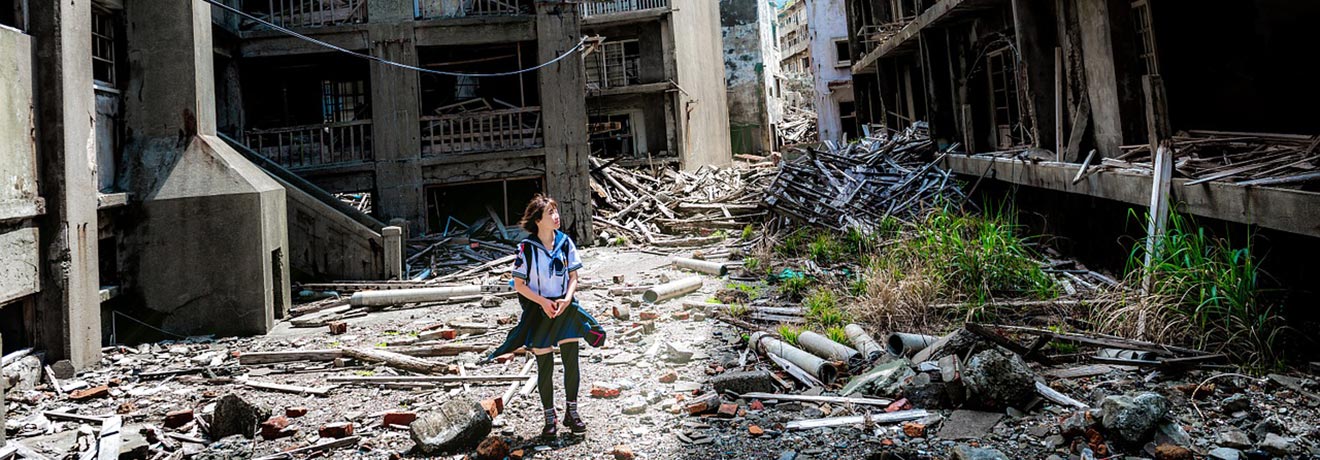It’s well known that asbestos has a long latency period, with diseases taking 20 or more years to manifest. For workers in Japan, the fight for justice over their asbestos exposure has taken a similar amount of time. 13 years on from the first of numerous court cases, Japan’s Supreme Court has finally ruled in their favour – and could be a landmark in the global fight against asbestos.
Like many industrialised countries in the 20th century, Japan was a heavy user of asbestos. The post-War reconstruction of the country in the 40s and 50s saw millions of tonnes of asbestos imported and used in buildings across the islands, for everything from insulation to cladding. It’s estimated that around 3 million buildings still contain some form of asbestos, in varying states of repair.
Japan is also notoriously bureaucratic, and there is often a pressure not to ‘rock the boat’ by protesting or demanding change. As such, asbestos was only formally banned in Japan in 2008, and the deadliest forms (blue and brown asbestos) took until 1995, at least two decades after much of the rest of the world. To date there has been little responsibility taken for the damage this had caused, and the threat it continues to pose.
This goes partway towards explaining why this latest judgement is such a milestone. For the roughly 500 plaintiffs in this case, the ruling was not just a major admission of blame on the part of the firms involved, but also on the part of the central government. In what was the court’s first-ever unified judgement, the government was held liable for failing to protect people from asbestos exposure and subsequent illnesses, owing to its failure to act when evidence of the dangers of asbestos was made clear in the 1970s.
While the ruling may be appealed, it looks like being the start of a wave of smaller litigations. Alongside the agreed government compensation for the plaintiffs, four lawsuits are also set to progress in cities around Japan, having been taken up against construction material manufacturers. This could be the first step towards widespread compensation for victims – but sadly comes too late for the 186 plaintiffs who have died since the court cases first began in 2008.
Japan’s myriad of small contractors can make it hard to accurately track asbestos exposure and deaths, or pin incidents to one company. Regardless, the country has one of the worst rates of asbestos-related deaths in the world, with 1,512 deaths from mesothelioma alone in 2018, more than triple the level when statistics were first recorded in 1995. The actual rate is thought to be higher, with asbestos contributing to deaths in cases where it was not considered as a factor.
Asbestos isn’t too far from the headlines in Japan today. Only recently was it found that hundreds of thousands of products on sale in Japan were contaminated with asbestos, including items such as bath mats and soap dishes. This is believed to have been derived from dodgy imports, as well as insufficient product standards. Until 2006, items which contained less than 1% asbestos as a proportion of their weight were considered ‘asbestos free’, allowing them to go under the radar.
This is a big victory for Japan, but what does it mean for the rest of us? For a start, it’s proof that asbestos continues to be a problem – and one that still needs to be addressed with greater urgency and restitution by governments. Second, it identifies an ongoing problem with product standards, and the way that asbestos continues to sneak into consumer goods, whether that’s talcum powder-based cosmetics or Japan’s ‘dollar store’ goods.
Primarily, however, it is an example of organised dissent and legal action leading to substantive change. Unfortunately, the massive financial power behind firms which used to produce asbestos – many of which live on in different guises – still makes litigation extremely difficult. Cases like this set a precedent for pursuing these companies, as well as for the retroactive punishment of governments and national bodies.
The money is a minor salve for plaintiffs in these cases, many of whom have incurable and debilitating lung diseases. But the message it sends is a loud one, and could serve to protect people from experiencing the same problems they have. As long as asbestos remains in millions of buildings around the world – and continues to sneak into products – the battle has to continue to force manufacturers, property owners and other firms to deal with it – and ensure that their employees and tenants have a safe and secure future.
SAMS offers asbestos awareness training to help you learn more about the nature of asbestos, and help to identify and control it. To find out more and learn online for as little as £6.50, visit our UKATA Asbestos Awareness page.

